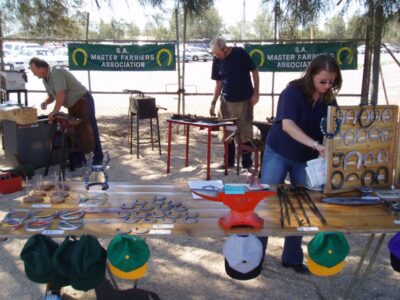I keep on having the same old recurring discussion with desperate horse owners, not only here in Australia but from quite a few other countries overseas. These owners have generally started via the internet in their search for answers to an ongoing lameness issue, which up to this point has caused them to employ the services of a succession of farriers using many and varied methods of hoof care, with no resolution of their problems. They are just looking for help. They contact me because I have a website and answer emails. They might be in Singapore or South Africa, in USA or in Australia or even just around the corner. But their horse has a hoof problem and they just want that problem resolved.
It should simply be a matter of calling a qualified tradesman farrier to do his or her job and trusting them to be correct, but in reality it is not quite that simple.
In any trade or profession, historically, there are those who are truly adept at their work – they are problem solvers and they understand the need to continually research and study to maintain their expertise. It doesn’t matter if we talk about a car mechanic or a surgeon or a cook – there are those who excel at it, those who are OK at it, and those who probably should never have been there in the first place.
In England there are strict regulations put in place by government and animal welfare organizations to control the standards of work performed by farriers on horses but it is one of the only countries where this is in force.
Elsewhere there are no laws to protect our horses and their owners from the effects of untrained guesswork carried out by people just trying to earn a living, and even worse they never seem to be held accountable for the real cost of the lameness that this is causing because there is no legal obligation requiring them to be accountable. And it seems that while many people will refuse to pay for shoddy workmanship for just about anything else, they still pay the farrier for poor workmanship or a lame horse and then complain to anyone who will listen to them.
In Australia the farriery industry is unregulated – anyone can call themselves a farrier, anyone can join a Farriers Association without certification, and there is no requirement other than personal motivation for a farrier to do the Certificate Three in Farriery, although some states require certification for a racetrack farrier. At this stage the Certificate Three in Farriery is actually categorised under the metal trades award. In an ideal world the equine industry would insist on a regulated trade for all hoof carers.
Farrier associations in all states are doing their best to educate and train people to the correct standards and encourage their trade accreditation, but those numbers are in the minority compared to the numbers of people practicing hoof care, so you can begin to see why the standards of work are extremely varied.
Even trade accreditation falls short of its intended long term purpose because the holder of such a certificate is under no obligation to continue to study or upgrade their skills ever again. By necessity most farriers work alone and can very easily develop habits in order to save time, often resulting in less than accurate work which they are often unaware of, even if lameness appears.
There are many and varied views as to what is correct or incorrect when it comes to trimming or shoeing a horse. Soundness and performance are the best guidelines when judging whether the work is right or wrong; regardless of whether or not the person was accredited, if they are doing it right it is because they know their trade and they do understand the hoof and are passionate about horses.
We can all recall horses which could have been brilliant but for the want of having good hooves have never reached their full potential.
It is still within our power to put things right in the hoof care industry and put pressure on government and other bodies to legislate and control work practices to our partners on this planet, the horses. I do believe that it is never too late to make a stand and make a start.
The horse owner has the real power as they control the purse strings. You, the horse owner, can demand and ultimately achieve what you want and in defence of your horses you have to make the moves and perhaps contact the AHIC or whichever body you feel is best suited to get the ball rolling for improvement to regulate the hoof care industry.
Quoting from their website, ‘The Australian Horse Industry Council (AHIC) is a national representative body, serving the Australian horse industry. The main role of the AHIC is to provide a voice for the interests of horses and horse owners in national forums. Particular issues that are a focus of AHIC activities include horse health and welfare, personal safety and any other issues that can have widespread effects across the horse industry.’
Collectively, all horse associations and clubs would be a strong force of persuasion, and I am sure that no politicians have forgotten the stock horses at the opening of the Sydney Olympic Games, but they probably didn’t understand the importance of those horses having properly maintained feet, or the importance of those responsible for that hoof care.

